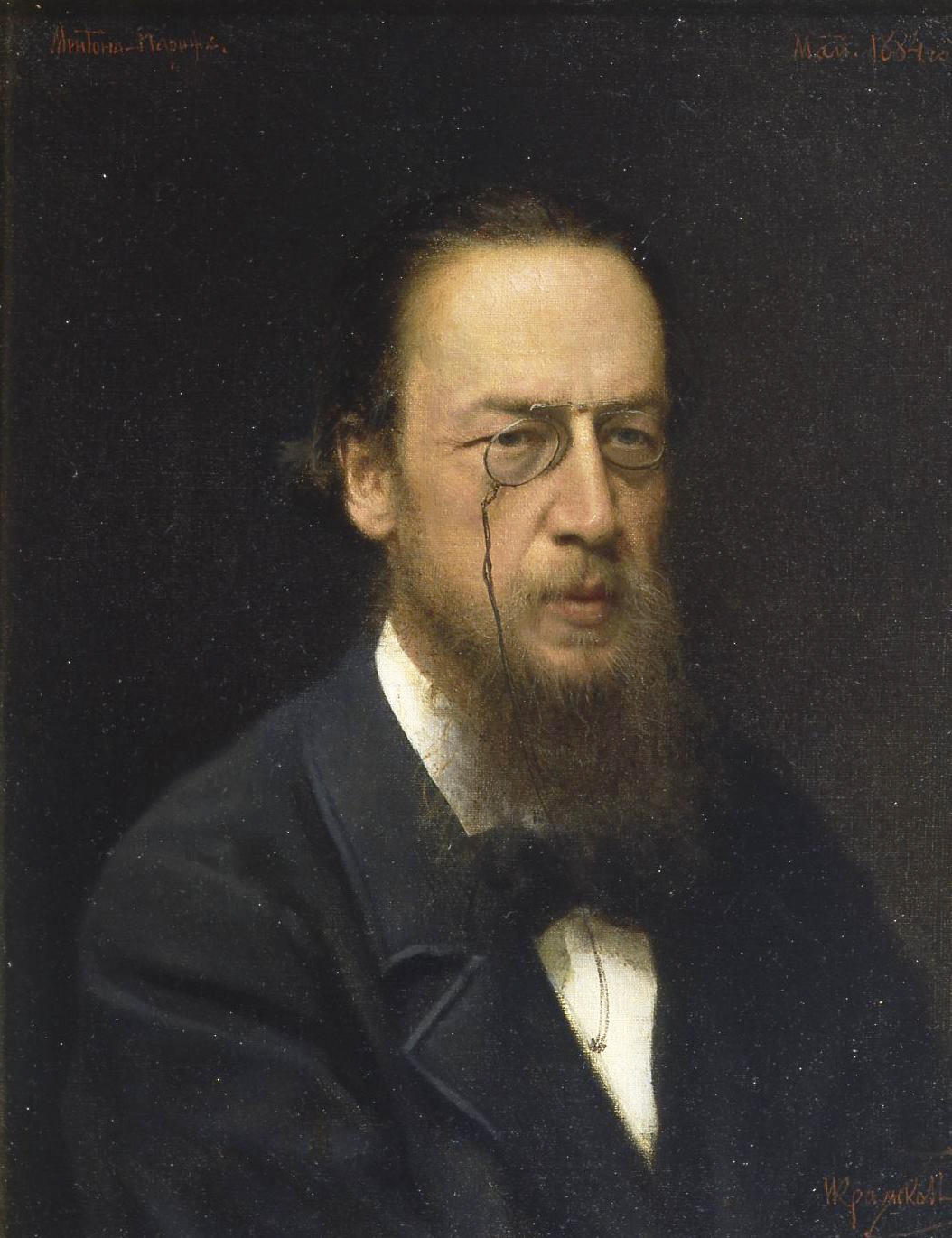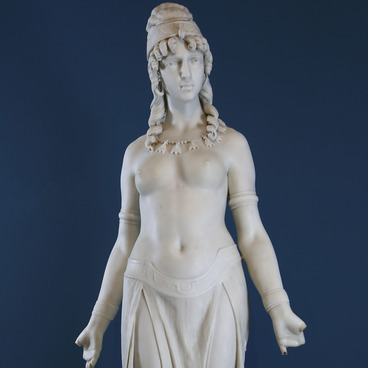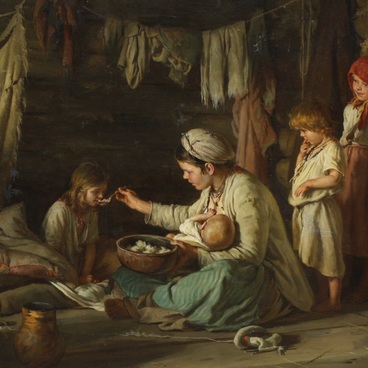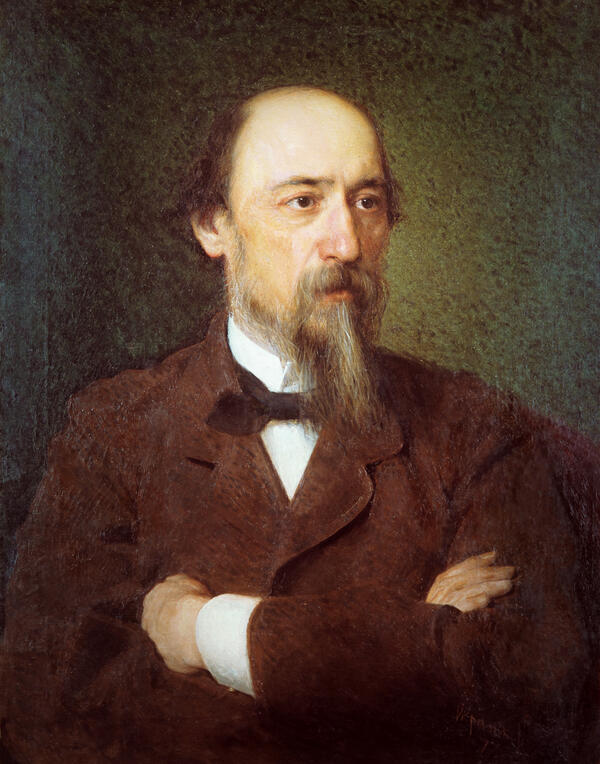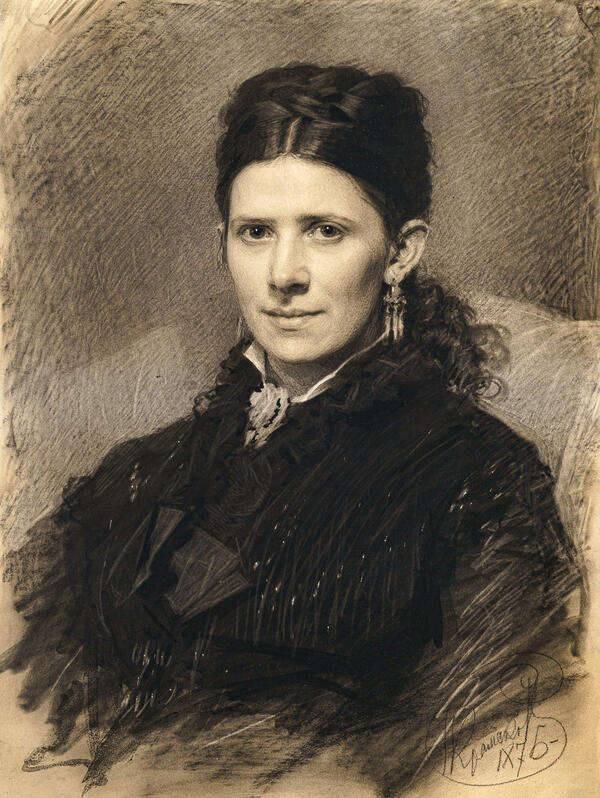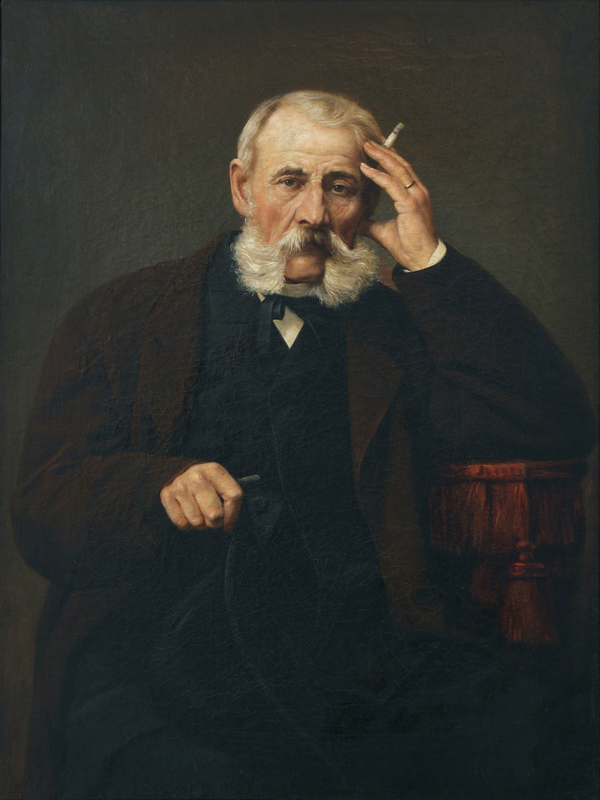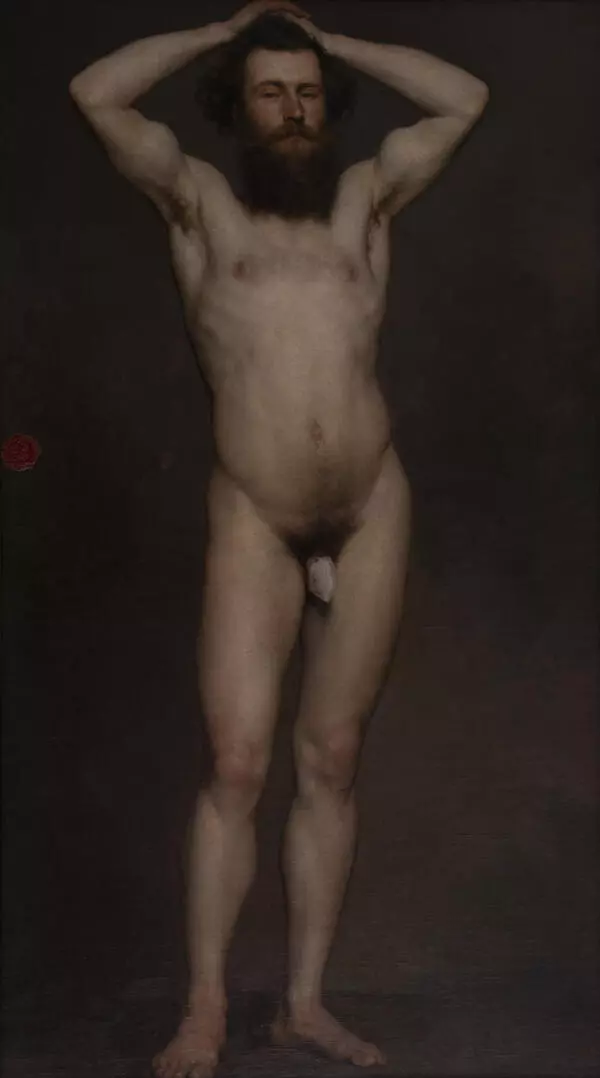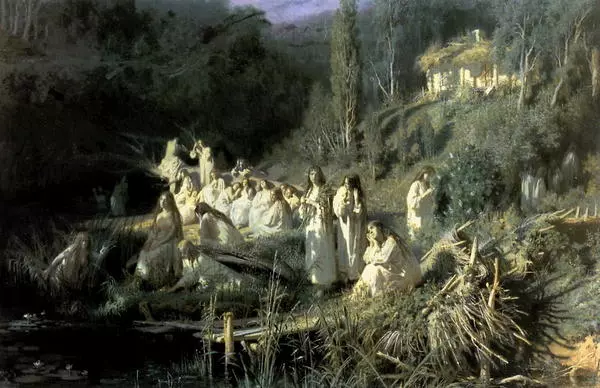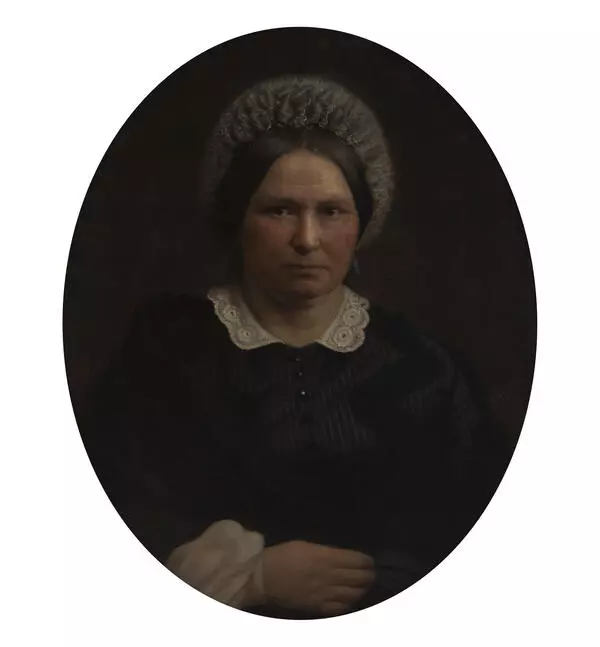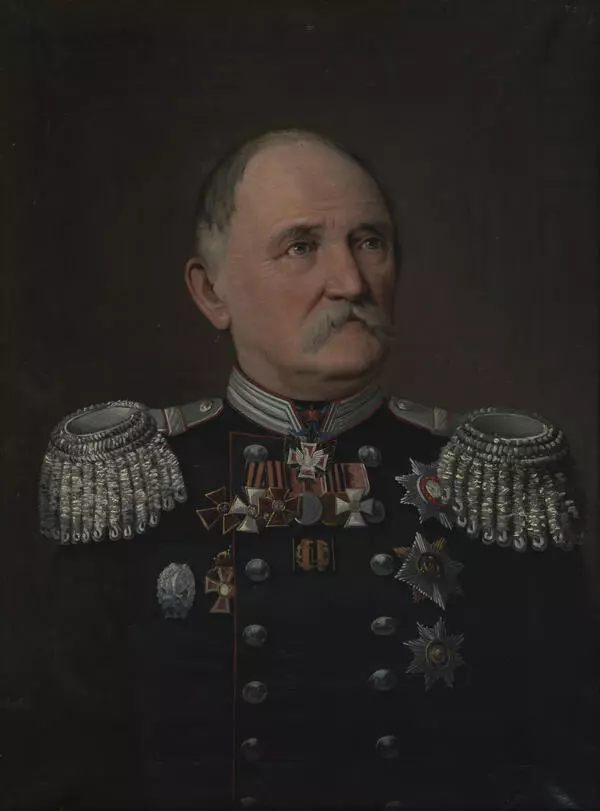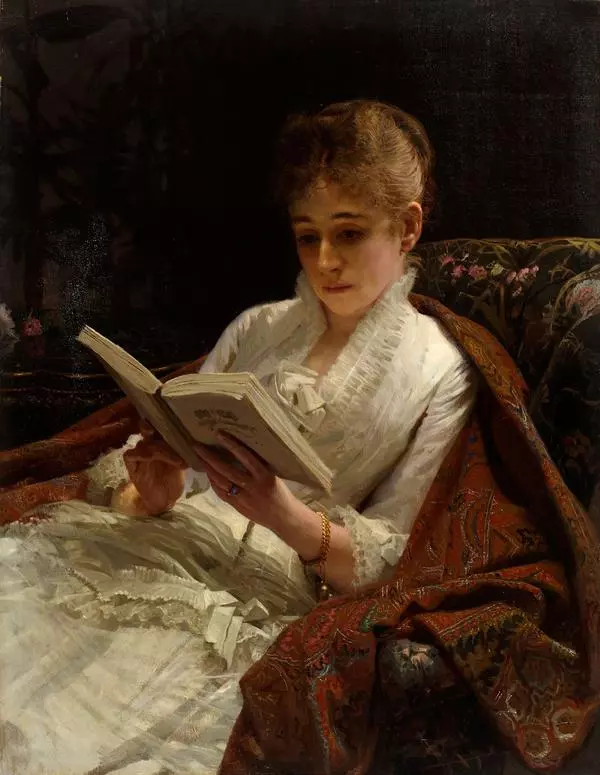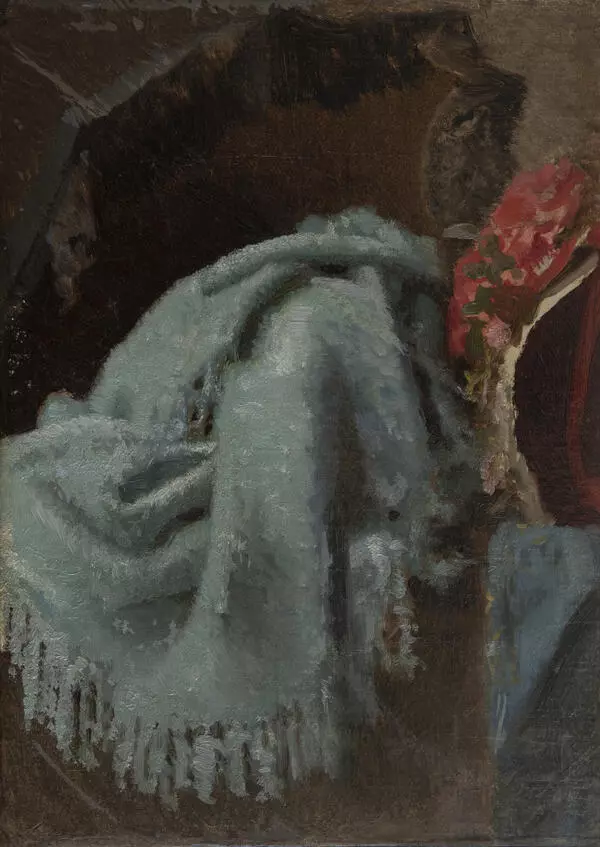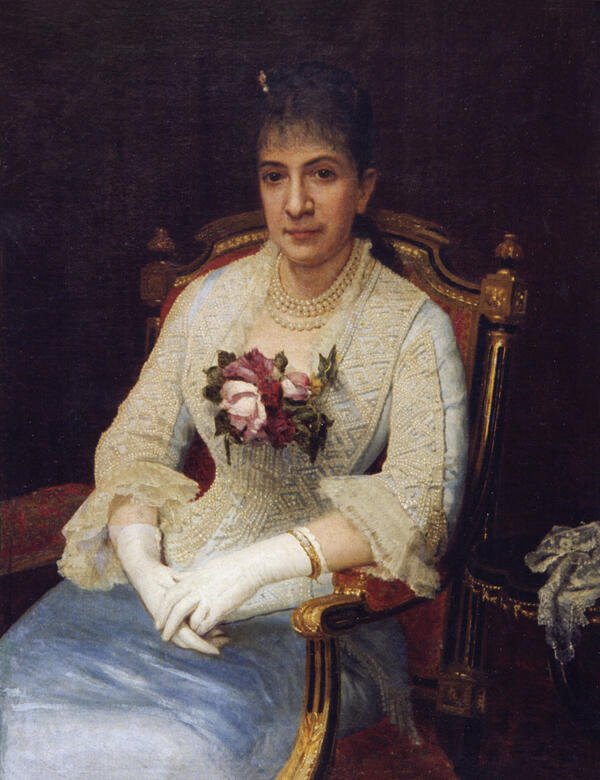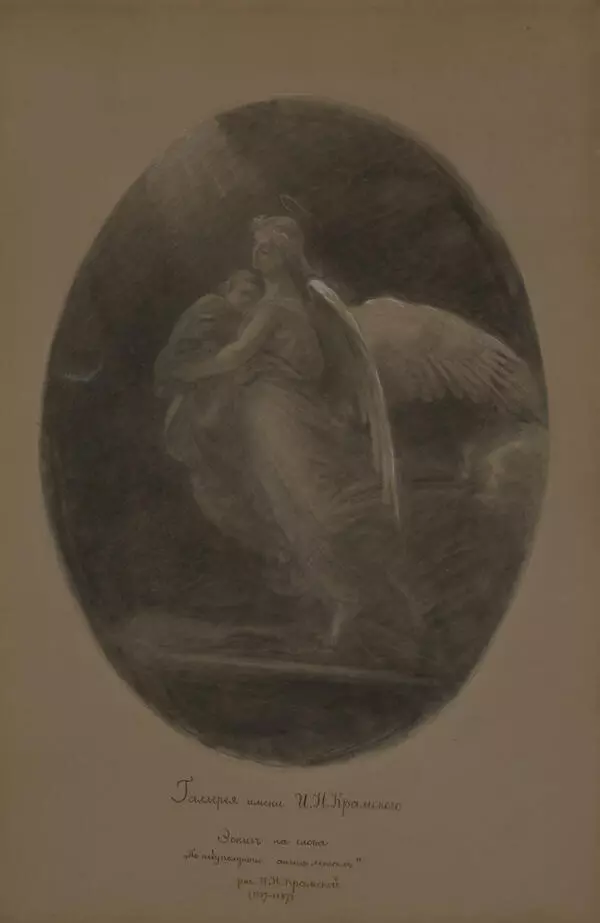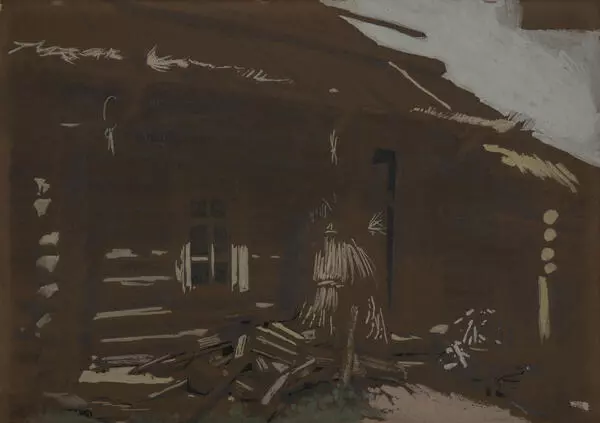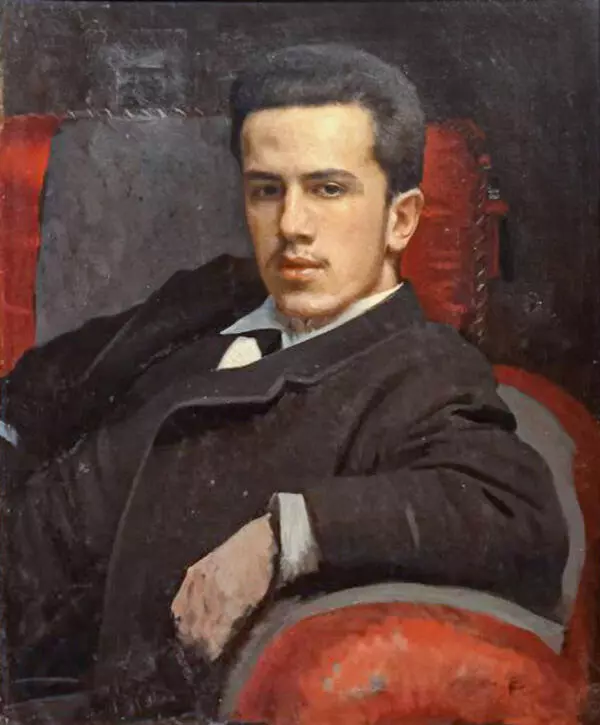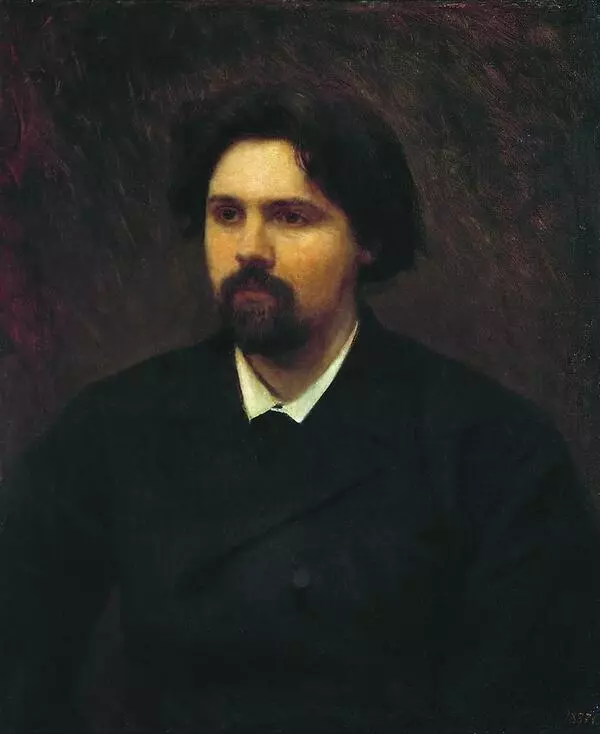Ivan Kramskoi was born in 1837 into the family of a filing clerk. At the age of 20, he enrolled at the Academy of Arts; in his seventh year, he received the small gold medal for his work Moses Bringing Forth Water out of the Rock and the right to compete for the big gold medal. Following the rules of the Academy, the board gave Kramskoi and the other future graduates one single theme for their work: the Norse myth A Feast in Valhalla. Some young artists thought that such a theme made the competition between genre and historical painters unfair. They asked the board to give them a free choice of the theme for their work, but the Academy ignored their request. Then Ivan Kramskoi, Carl Lemoch, Konstantin Makovsky, Alexander Morozov and other graduates who supported the emerging Russian realistic painting movement refused to participate in the competition and left the Academy with a scandal. This situation passed into the history of Russian art as the ‘Revolt of the Fourteen’.
Portrait of N.A. Belogolovy
Время создания
1884
Размер
55x43 cm
Техника
oil on lined canvas
Коллекция
2
Открыть в приложении#3
#8
‘When all the petitions were submitted, we left the Executive Board and then the Academy itself, and I felt that I had the daunting freedom we had desperately strived for.’
Ivan Kramskoi (Source: https://www.culture.ru/persons/8239/ivan-kramskoi)
#9
Having lost the studios provided by the Academy, in which many artists lived with their families, the ‘rebels’ faced financial hardship. Kramskoi suggested that they should unite, and it resulted in the creation of the Artel of Artists, which evolved into the famous Society for Itinerants Art Exhibitions.
The union was based on the principles of democratic art. Ivan Kramskoi, who initiated the Society, wanted art to be understandable by the general public and sought to make the language of art simple and accessible. The Itinerants (Peredvizhniki) abandoned the canons and aesthetics of academicism and turned to critical realism. Their paintings were intensely psychological and featured masterful typification. Many Itinerants did paintings on social issues.
Ivan Kramskoi, in particular, created a number of psychological portraits of civic-minded individuals of his time: Pavel Tretyakov, Ivan Shishkin, Leo Tolstoy and others.
This series includes the portrait of Nikolai Belogolovy exhibited at the Primorye State Picture Gallery. Nikolai Belogolovy was a doctor, notable political writer and public figure. Between 1891 and 1894, he lived abroad, where he took an active part in the publication of the émigré newspaper in Geneva called Obshcheye Delo (Common Cause). Belogolovy also wrote the memoirs A Siberian’s Recollections of the Decembrists.
The union was based on the principles of democratic art. Ivan Kramskoi, who initiated the Society, wanted art to be understandable by the general public and sought to make the language of art simple and accessible. The Itinerants (Peredvizhniki) abandoned the canons and aesthetics of academicism and turned to critical realism. Their paintings were intensely psychological and featured masterful typification. Many Itinerants did paintings on social issues.
Ivan Kramskoi, in particular, created a number of psychological portraits of civic-minded individuals of his time: Pavel Tretyakov, Ivan Shishkin, Leo Tolstoy and others.
This series includes the portrait of Nikolai Belogolovy exhibited at the Primorye State Picture Gallery. Nikolai Belogolovy was a doctor, notable political writer and public figure. Between 1891 and 1894, he lived abroad, where he took an active part in the publication of the émigré newspaper in Geneva called Obshcheye Delo (Common Cause). Belogolovy also wrote the memoirs A Siberian’s Recollections of the Decembrists.
#10
Ministry of Culture of the Russian Federation
читать дальшескрыть
00:00
00:00
1x
Portrait of N.A. Belogolovy
Время создания
1884
Размер
55x43 cm
Техника
oil on lined canvas
Коллекция
2
Открыть в приложении
Поделиться
